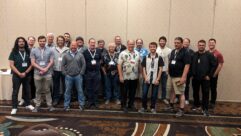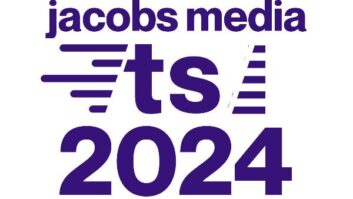Several years back, I contributed a column centered on the theme of finding parts to use in a pinch.
How many times have you needed something, gone through all the parts trays and boxes and still come up empty?
My boss here in L.A., Dennis Sloatman, ran into this issue recently. After testing a standby transmitter at one of our sites (using it on-air), he tried to go back to the main only to find that it wouldn�t come back on. The problem ended up being a blown fuse in the exciter; and, after looking everywhere, he didn�t find the fuse he needed, which was a 10A slow. He did, however, find a couple of 4A slows, and soldered them together, viz:
Now, of course, none of us believe this made a true 8A fuse, and it was soon replaced with a real 10A fuse. It did work fine for the intermediate period, though. This little goodie was useful for the application because it fit into a fuse-clip on a circuit board, so perhaps that was an usual circumstance.

It�s not uncommon to substitute a lower-current fuse for the normal size in a pinch; however, do not put higher-current fuses in place of lower ones, especially in any piece of gear that you are going to turn on and walk away from.
IP PHONE
Another tech tip this time around comes to us from our own Chriss Scherer (former editor and now the member communications director at the Society of Broadcast Engineers).
Chriss says: �I needed an office phone, and the SBE main office does not have an IP-based phone system. I asked around and got lots of ideas for an IP phone service. The one I chose is an Obihai Obi100 with Google Voice service (http://www.obihai.com/docs/OBi100DS.pdf). The interface is smaller than a deck of cards.�

�Setup was easy. I chose a 317 number, so I�m in the same area code as the SBE. The box is $45, plus the cost of a POTS phone. No monthly service fee.�
I�m still fascinated by the concept (even though I�ve been using VoIP services for quite some time myself), and it has quite a few practical uses in our line of work.
Chriss� idea is that this would be handy at a transmitter, or other remote site, at which there was an established IP link, but no POTS line.
Another idea is for use during remotes. This is a SIP-based service; so, as you move around the country or wherever, when you establish an IP connection using the OBI100 (or other similar services), you can be reached by the same number. That could come in handy in locations where cell-phone coverage is less than optimal.
If you still have an older remote control that cannot generate emails and lacks an IP interface of any sort, then you could consider a device such as this for your POTS connectivity. I�ve seen several attempts to do this via cell telephone interfaces, with mixed results.
Of course there are other choices as well, such as Ooma or Vonage.
SILENT OPS
I�ve spent a lot of time and energy over the last 20 years trying to keep noisy computers out of studios.
�In 1997, I did a studio project where we built a cluster of studios that included a computer room (that�s what we called it back then), and of course, we extended mouse and keyboards (using Cybex). The problem with KVM extenders is that they always take up space that you need for something else; or at the very least, they present a challenge from a wire management standpoint.
My colleagues Richard Ramos and Clint Sago have come up with an ultra-simple, modern approach to this problem: use computers that don�t make noise at all. Additionally, mount the computer at a convenient spot in the furniture�eliminating the KVM problems.

During a recent studio build they used multiple copies of the NewerTech NuShelf sold by OWC software (http://tinyurl.com/q8lcpz8). It�s meant to hold a small-form Mac mini, but works fine for our HP small form-factor computers; this installation can be seen above.
Irwin is RF engineer/project manager for Clear Channel Los Angeles. Contact him at [email protected].
We want your tips
Tech tips may be suitable to earn SBE recertification credits.
Send your tips to [email protected].












